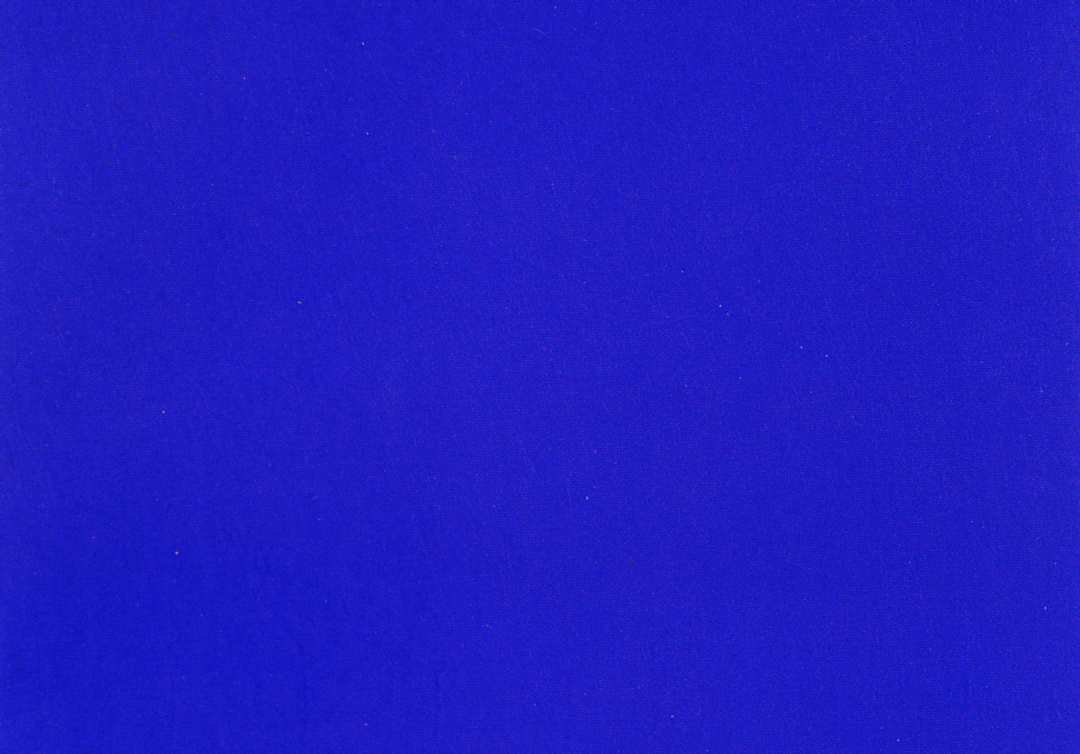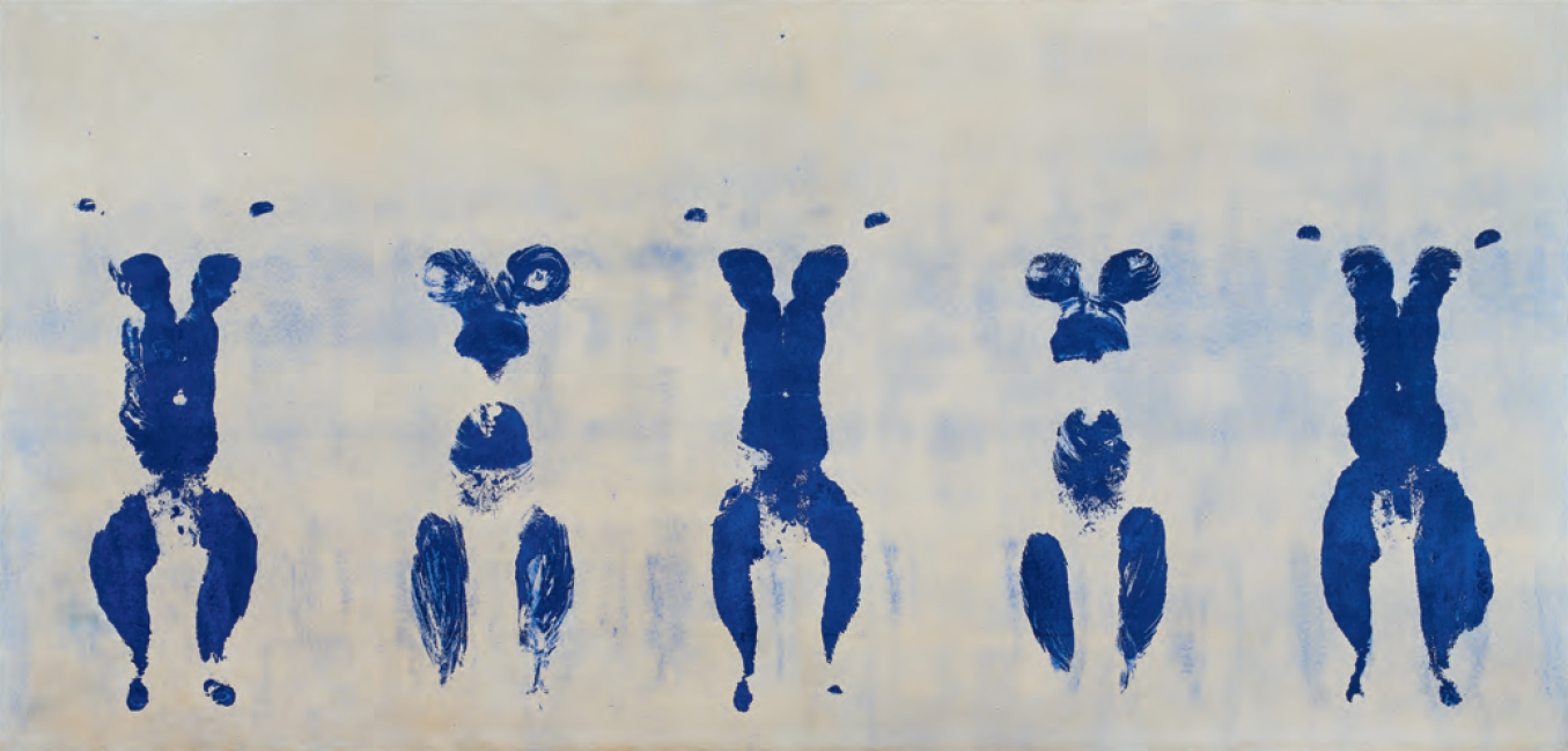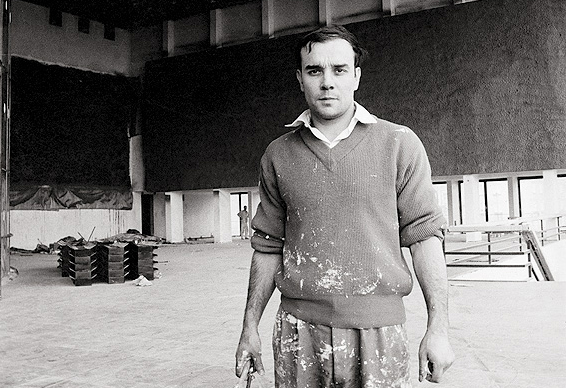
What was it with Yves Klein and Blue?
On the anniversary of his birth, a look at the artist's preoccupation with the colour blue, courtesy of Chromaphilia
"What is blue"?" the nouveau realist, minimalist and performance artist Yves Klein famously asked. "Blue is the invisible becoming visible. Blue has no dimensions, it is beyond the dimensions of which other colours partake," he concluded.
Few artists in history have been as closely linked to one specific colour, or have made colour so directly palpable in their art, than Yves Klein, born this day (April 28) in 1928. Yet Klein actually referred to his blue monochromes as "leftovers from the creative process, the ashes". These emphatically physical objects – unmodulated, intensely saturated ultramarine fields of velvety pigment – were, for Klein, a conduit towards an idea about immaterial terrain, bridges into a great void. He called himself the painter of space.
But how did he get that space so bright? so vibrant? So electric? Stella Paul, writer of our new book Chromaphilia: The Story of Colour In Art, as always, has the answer.
"In Klein’s case, medium was crucial to message, and his medium is ultramarine blue both like and unlike the colour that resonated through medieval and Renaissance art," she writes in Chromaphilia.
Ultramarine pigment was ‘incandescent’ to Klein, but the raw pigment needs a binder to become paint, and when the powder is mixed with oils it darkens and dulls. Klein’s challenge was to preserve the luminosity that he considered the magic of the colour. Here's Stella Paul again on how he set about answering that challenge.

"One early strategy involved exhibiting troughs of pure, loose pigment on the floor, as a brilliant carpet of blue. Later, he worked with Edouard Adam, a Parisian colour vendor who consulted with chemists at Rhone-Poulenc, to create a synthetic binder in which to suspend the pigment. The result was Rhodopas m60a, which could be thinned to various levels of viscosity with ethanol and ethyl acetate.
"This binder preserves the magical luminescence of the pigment by the way in which long chain molecules enfold the pigment, not smothering or ‘killing’ the individual particles. The material, which is toxic and unforgiving, dries extremely quickly to a velvet finish, allowing no touch ups.
"Klein commissioned his own customized synthetic paint using this new binder, which he patented as ikb (International Klein Blue); from 1957 onwards he used this pigment almost exclusively. With ikb, Klein entered what he called his epoca blu, a transcendent vision of the boundlessness of space and dreams. He was inspired by the French philosopher Gaston Bachelard, whom he quoted: ‘First there is nothing, then a depth of nothingness, then a profundity of blue.’"

Klein often applied his paint with rollers, rather than brushes that would show strokes made by an individual hand. Later in life he would say that brushes were too psychological: testaments to personal gesture. He demanded active viewer engagement, wanting each observer to be immersed, even impregnated, with colour, experiencing and internalizing its effects. He wanted to convey to every spectator his view that colour is a palpable character, a personality.
One of his most famous works, The Anthropométries, provocatively combines theatre and blue paint. As Stella Paul explains: "The works were created in performance, with nude women playing the role of human brushes commanded by Klein. Some of the performances were accompanied by Klein’s Monotone Symphony: twenty minutes of one continuous sound, ‘deprived’ of beginning and end, and twenty minutes of silence. Under Klein’s direction and before his eyes, the artworks took shape without his touch. He was conductor or director as much as painter, as the blue paint covering the women’s bodies transferred to the canvas with no intervening brush, roller or other artists’ tool."
Chromophilia: The Story of Colour in Art uses 240 artworks as case studies to tell the story of ten individual colours or colour groups. It explores the history and meaning of each colour in art, highlighting fascinating tales of discovery and artistic passion, and offering easily accessible explanations of the science and theory behind specific colours.
To accompany each of our colour stories inspired by Chromophilia we're pulling together a small Phaidon selection of works by colour that are affordable on Artspace. Today's works are all blue and all are just over or way under £1000 / $1,300. Many of them are by well-known names, among them Yves Klein included, Alex Katz, Wim Wenders, Josef Albers, Keith Haring, Maurizio Cattelan, Tracy Emin, Yinka Shonibare, David Shrigley, Stephen Shore, Sarah Sze, James Welling, Peter Blake, Jeff Koons, Paul McCarthy and Joan Miró.
So that's all blue, all under £1000/$1,300 and all here. (Other colours and price points are, of course, available). Buy Chromophilia here and look out for the next colour story in our new series and check out the art on Artspace.